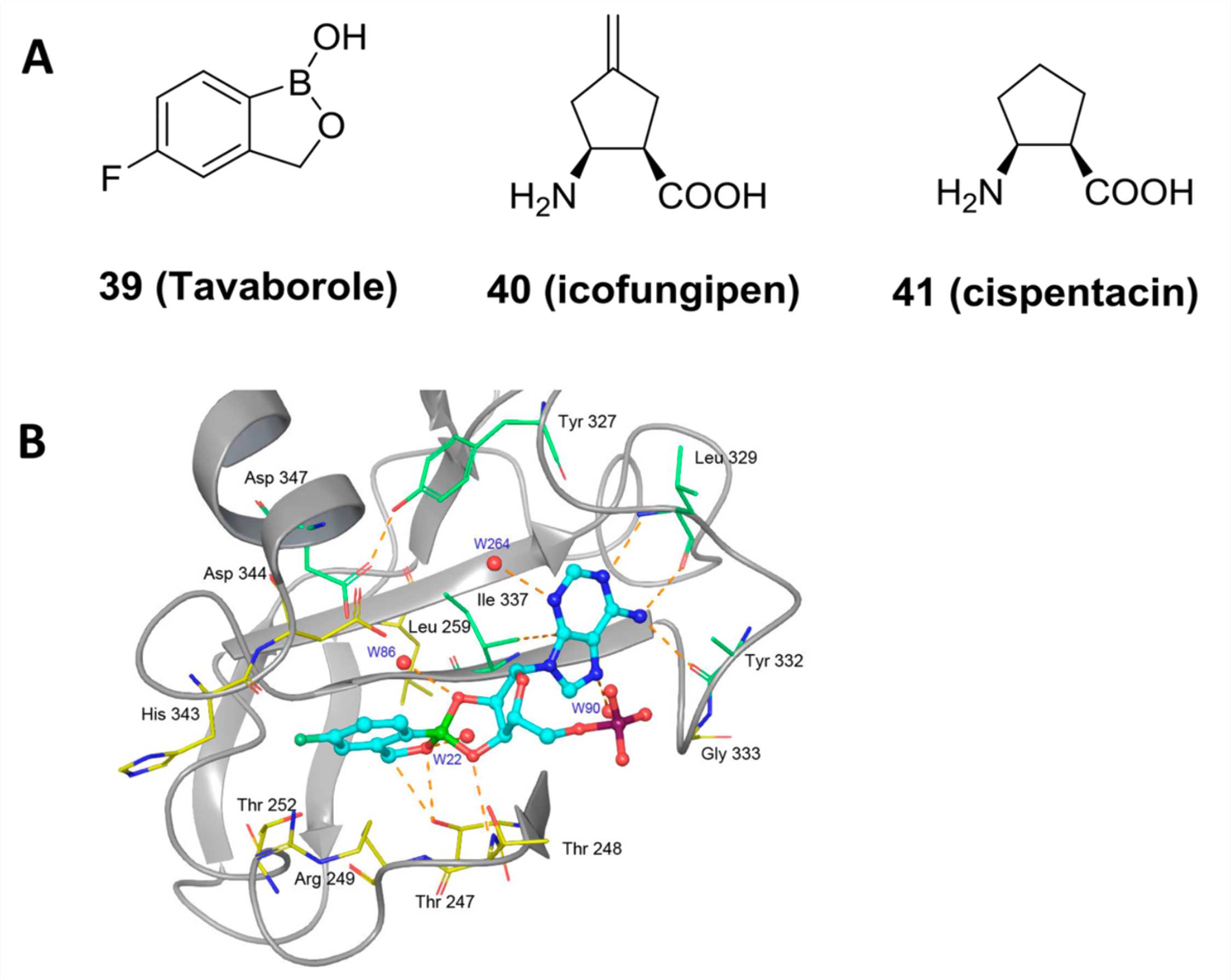The dramatic rise in the prevalence of drug resistance is driving the search for novel antifungal agents that inhibit targets that are essential to fungi and that are not affected by mechanisms of resistance to current therapeutic agents. In this regard, the aminoacyl-tRNA synthetases, which are crucial enzymes for protein synthesis, have been a focus of research for antifungal drug discovery. As a well-trusted leading company in drug discovery, Creative Biolabs offers comprehensive preclinical antifungal drug discovery services targeting various potential targets, including the aminoacyl-tRNA synthetases.
Introduction of Aminoacyl-tRNA Synthetases
Aminoacyl-tRNA synthetases (AaRSs) are enzymes that play important roles in protein synthesis by catalyzing the synthesis of aminoacyl-tRNAs. This reaction involves the attachment of the correct amino acid to its corresponding tRNA during the translation stage. It is performed by a two-step process, in which amino acids are first activated by ATP, forming an intermediate aminoacyl adenylate, and then transferred to the 3’-end of tRNA to form the end-product. When the enzymes are inhibited, protein biosynthesis is halted and the bacterial growth can be attenuated, making them interesting antimicrobial drug targets. In the field of antifungal drug discovery, two enzymes have been validated as promising antifungal targets which are leucyl-tRNA synthetase (LeuRS) and isoleucyl-tRNA synthetase (IleRS).
 Fig. 1 AaRSs as potential antifungal targets. (A) Chemical structures of AaRS inhibitors. (B) Binding mode of a LeuRS inhibitor. (Liu, 2018)
Fig. 1 AaRSs as potential antifungal targets. (A) Chemical structures of AaRS inhibitors. (B) Binding mode of a LeuRS inhibitor. (Liu, 2018)
LeuRS as an Antifungal Target
LeuRS has been successfully applied as a target in the development of antifungal agents. For instance, Tavaborole (AN2690), is a specific inhibitor of yeast LeuRS and it was marketed in 2014 for the treatment of onychomycosis. The inhibition is achieved by the formation of a LeuRS−inhibitor complex in the editing site of the enzyme. More specifically, the complex is formed through the binding of boron atom of AN2690 to the 3’-terminal adenosine of tRNA (Figure 1B). This drug is applied topically for treatment of fungal infections because the half-life is too short for it to be developed as a systemic antifungal agent.
IleRS as an Antifungal Target
IleRS has also been reported to have great potential for antifungal drug discovery. For instance, Icofungipen, which is a synthetic derivative of the naturally occurring β-amino acid cispentacin, has been demonstrated to have excellent antifungal activity against both fluconazole-susceptible and fluconazole-resistant C.albicians infections. There is no doubt that, with the deepening understanding of the enzyme structure, design of new inhibitors of these enzymes can be promoted in the future.
Features of Our Services
As a well-known research partner, Creative Biolabs offers fully-integrated contract research services for antifungal drug development targeting the Aminoacyl-tRNA Synthetases. We provide a broad portfolio of preclinical antifungal drug discovery services ranging from target identification and validation to IND-enabling services. Moreover, our services are characterized by:
-
Years of drug discovery experience and expertise
-
Customized services to meet the specific needs of your drug discovery program
-
Expert scientists and staff with keen project and program management skills
-
Individualized technical support and best after-sale services from our scientific team
For more information about our antifungal drug development services, please do not hesitate to contact us.
References
-
Liu, N.; et al. Emerging New Targets for the Treatment of Resistant Fungal Infections. Journal of medicinal chemistry. 2018.
-
Yao, P.; Fox, P. L. Aminoacyl‐tRNA synthetases in medicine and disease. Embo Molecular Medicine. 2013, 5(3):332-343.
For Research Use Only.


 Fig. 1 AaRSs as potential antifungal targets. (A) Chemical structures of AaRS inhibitors. (B) Binding mode of a LeuRS inhibitor. (Liu, 2018)
Fig. 1 AaRSs as potential antifungal targets. (A) Chemical structures of AaRS inhibitors. (B) Binding mode of a LeuRS inhibitor. (Liu, 2018)


